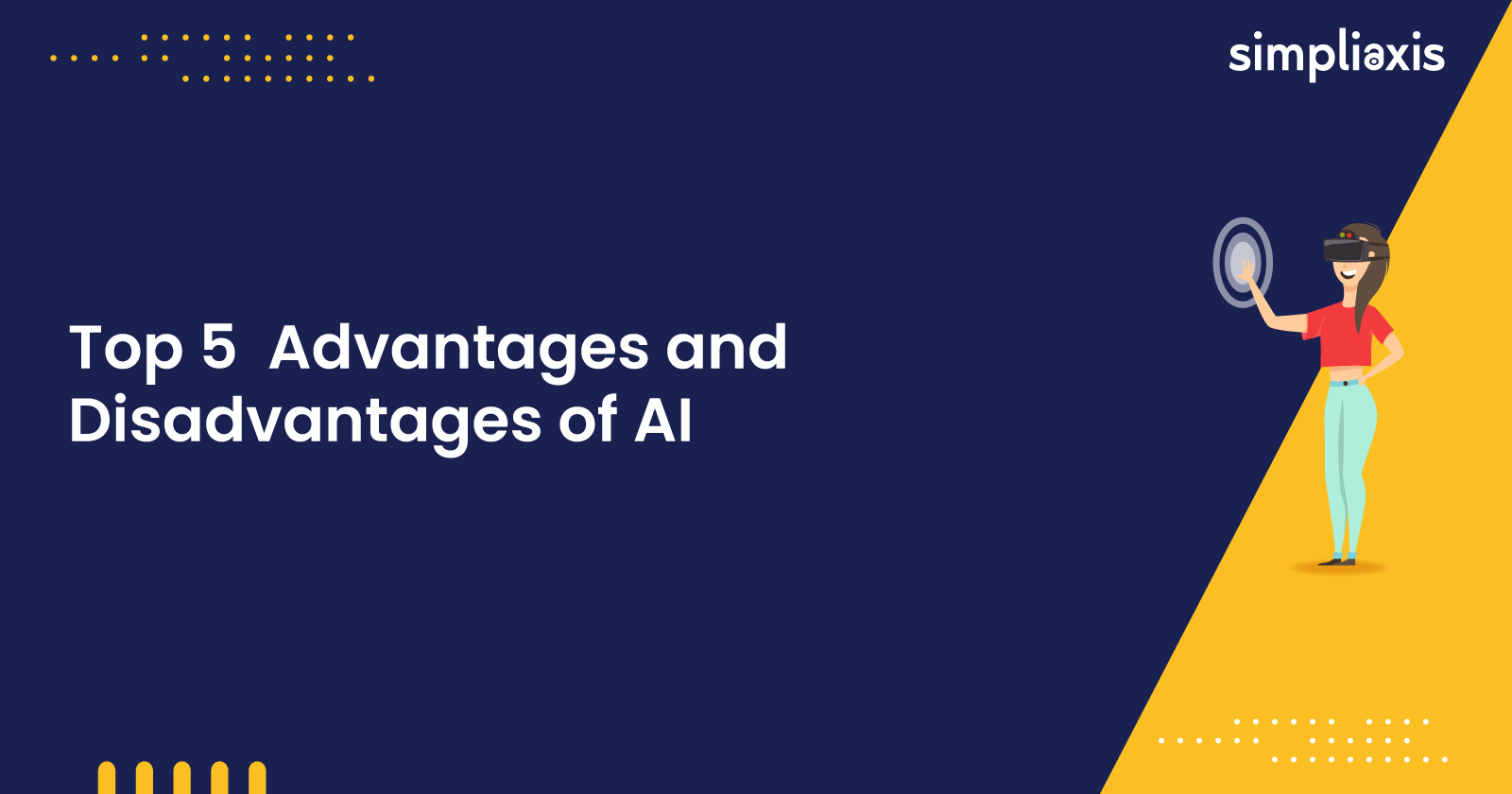AI is a revolutionary technology that empowers computers to make smart decisions, interact, and transform complex tasks into simple ones like humans. This technology enables a machine to learn from the past, take in new information, and perform tasks that require human intelligence.
Various smart gadgets like smart home devices, language translation tools, and self-driving cars use deep learning and machine learning only to simplify the tasks of humans. These technologies, namely, machine learning as well as deep learning, utilize the method of recognising analogous patterns in the given set of data and analysing large volumes of information to function smoothly. This way, the computers receive training to execute certain activities in a human-like manner.
Before exploring the benefits and limitations of using AI, grab the chance to transform your career with an entry-level Introduction to Generative AI.
Here are the top 5 advantages and disadvantages of the use of AI.
Benefits of Artificial Intelligence
1. Improves Decision-making Process
AI can use vast amounts of data to discover trends or patterns that can go unnoticed by the human eye. Machine learning can predict future outcomes based on thorough analysis of historical data, which in turn can help people or organisations to make accurate and quick decisions. AI can also reduce the time required to come up with decisions as it is capable of processing information quickly, even in competitive and dynamic environments.
2. Minimizes Human Mistakes
At every stage of decision-making, AI analyzes information that was previously collected along with an array of algorithms. If programmed in the right way, it becomes easy to decrease human errors that occur due to negligence to null. This helps to improve precision and accuracy within organizations and teams.
3. 24X7 Assistance
AI is also known for providing round-the-clock assistance. A few relevant researchers claim that humans can remain productive only for 3-4 hours every day. It’s important for humans to take time off and short breaks to get rid of stress and maintain a good work-life balance. However, organizations can leverage AI endlessly to increase productivity. AI can multitask and think more quickly than humans. By using AI algorithms, organizations can automate repetitive and tedious tasks.
4. Drives Automation
AI has the capacity to automate repetitive tasks and free up tasks of employees. This leisure time can be used by employees for innovative purposes. AI can do things that are routine and boring, like the consistent inspection of documents, sending the same thank-you messages to different customers, or asking for continuous feedback through the mail. Learn how to leverage Generative AI in HR processes.
5. Optimizes Digital Tasks
A majority of tech-savvy organizations rely on digital assistants to communicate with users and customers. This reduces the need to employ humans. There are some websites that enable AI-based assistants to display customized feeds and content to meet the customer’s requests. Some websites also allow users to search for products through conversations.
Limitations of Artificial Intelligence
1. Privacy Issues
The main role of AI systems is data collection, analysis, and storage of massive amounts of data. In many cases, it can be a source of privacy issues if it’s releasing someone’s personal data especially when a user has not agreed to it.
AI-based data mining practices and surveillance systems do not respect personal privacy, Therefore they may let cybercriminals, governments, and corporations misuse an individual’s data. The threat of data leaks and security breaches has increased significantly. This also poses the risk of identity theft, the exploitation of financial/personal information as well as other forms of exploitation.
2. Lack of Emotional Intelligence
The concept of ‘emotional intelligence’ involves the capability of an individual to perceive and understand feelings, manage his/her feelings, interact with others in a bias-free way as well as show empathy toward their emotions. An obstacle to AI utilization is that it misses out on the human elements such as empathizing with the user.
AI can be trained to identify certain emotional cues and solve problems by analyzing historical data. However, AI is incapable of expressing empathy or navigating volatile human emotions. This can prevent AI from carrying out roles like human resources or counselling as they require interpersonal skills and emotional sensitivity.
3. Lack of Creativity
Although AI can write, create music, and generate art by studying existing patterns, it is incapable of thinking out of the box or producing original content. AI-generated contents fail to match the creative abilities of humans, like imagination, abstract thinking, and emotional depth. AI’s outputs result from pre-existing data that lack proper innovation. Owing to its dependence on existing data patterns, AI cannot match human creativity, which stems from emotional intelligence and intuition.
4. Unemployment Threats
Excessive use of automation and artificial intelligence induces unemployment in industries that are heavily reliant on repetitive and routine work. Jobs in various industrial domains, like retail, manufacturing, customer support, medical diagnostics, or even legal research are currently experiencing a massive change due to automation and AI. Although AI is capable of creating new employment opportunities, the time required to upskill and retrain employees is significant. This can lead to job displacement, high unemployment, and unmanageable social inequality.
5. Incompetent Workforce
The dependency on AI for handling tedious tasks to logical decision-making can give rise to human laziness. People prefer to rely heavily on artificial intelligence when performing their duties rather than working on their skills or learning new information. This can make an individual’s problem-solving or critical-thinking skills dull.
Conclusion
While using AI, companies should, at first, get to know the advantages and disadvantages, which arise from it. Specifically, it should be a priority for organizations to understand the cons of AI and develop the strategies they need to reduce these challenges. It will make AI adoption in the workplace more ethical and time-efficient.
